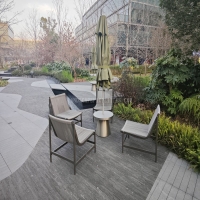Welcome to the website for landscape facilities products and knowledge.
How does the table’s design minimize the risk of injury, such as rounded edges or heat-resistant surfaces?
Modern table designs incorporate multiple safety features that significantly reduce injury risks in both residential and commercial environments. Rounded edges represent one of the most fundamental safety considerations, eliminating sharp corners that traditionally caused impact injuries, particularly benefiting households with children and elderly individuals. This curvature design principle extends beyond mere corner rounding to include smoothly contoured table legs and seamlessly integrated joints that prevent clothing snags or skin abrasions.
Heat-resistant surfaces constitute another critical safety element, especially for tables used in dining and kitchen settings. Advanced materials like engineered quartz, treated hardwoods, and composite laminates can withstand temperatures exceeding 400°F without transferring heat to the surface, effectively preventing accidental burns from hot cookware. Some manufacturers incorporate innovative cooling technologies within table structures that dissipate thermal energy rapidly.
The structural engineering behind contemporary tables addresses stability concerns through widened bases, low centers of gravity, and anti-tip mechanisms that prevent accidental tipping, even when weight is applied to table edges. These designs undergo rigorous testing protocols simulating years of use and stress conditions to ensure long-term reliability.
Material selection further enhances safety profiles, with non-toxic finishes eliminating harmful chemical exposure, scratch-resistant coatings preventing splinter hazards, and fire-retardant treatments adding another layer of protection. Commercial establishments particularly benefit from tables with moisture-resistant surfaces that reduce slip hazards while being easy to sanitize.
Ergonomic considerations complement these safety features, with height-appropriate designs minimizing awkward bending or reaching that could lead to musculoskeletal strain. Adjustable tables accommodate different user needs, while properly designed underspaces provide adequate leg clearance without protruding elements that might cause impact injuries.
These comprehensive safety approaches demonstrate how furniture design has evolved beyond aesthetic considerations to actively prevent common household and commercial injuries through thoughtful engineering and material science innovations. Manufacturers continue developing new safety integrations, responding to consumer demand for furniture that protects without compromising style or functionality.
Related search:

Recommendation
Metal structure rattan chair without armrests for single person, with woven seat and backrest.